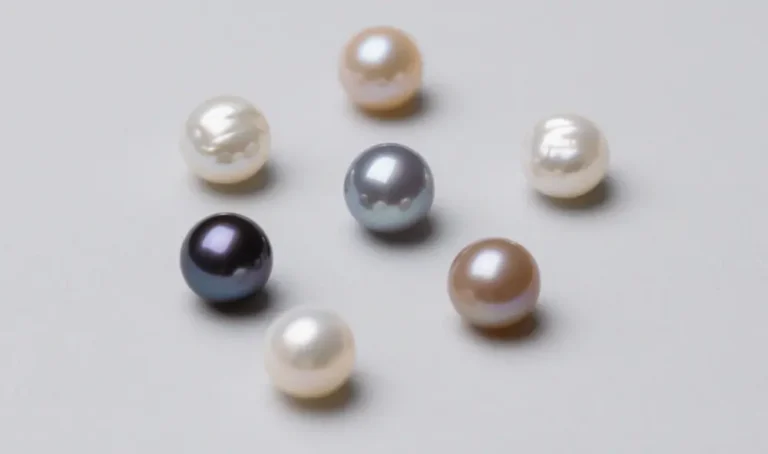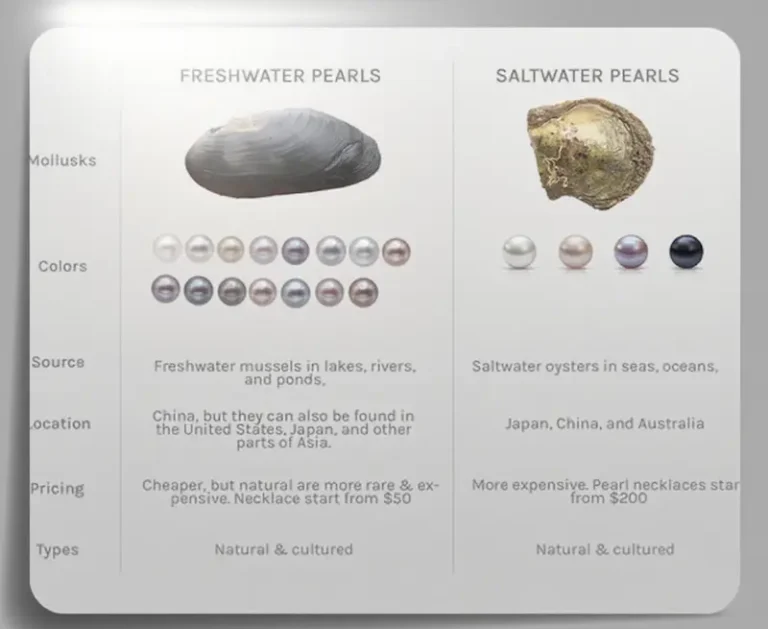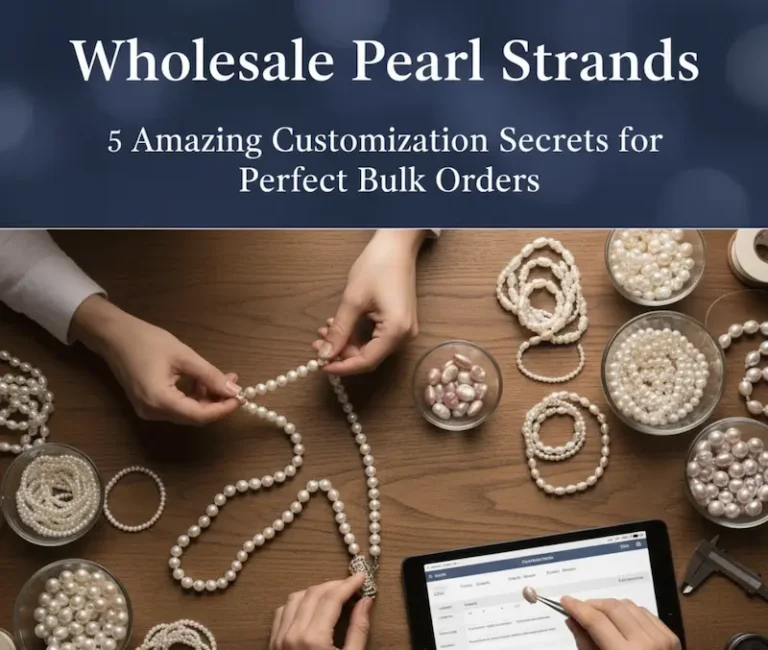Look, if you’re wondering how to price pearls properly, you’re not alone. Every day at Xinye Pearl, we get calls from retailers asking the same thing: “How to determine the value of pearls?” or “How do you get pearls valued?”
Understanding how to price pearls effectively is important for sales and customer satisfaction.
Pricing pearls isn’t difficult, it’s just that most people think of it as too hard.
Once you’ve mastered pearl pricing, you’ll be able to stand out in a competitive marketplace.

Reasons why pearl pricing is very important
Here’s what happens when you get pearl pricing wrong:
- Overprice: Your customers walk away
- Underprice: You lose money (and look amateur)
- Price randomly: You lose credibility fast
The truth? There’s a system to this. And once you know it, you’ll never second-guess a pearl price again.
The 7 Pearl Grading Factors That Control Your Prices
How much are pearls worth depends on several factors including size, luster, surface quality, and pearl type.
Before we figure out the question of “How to Price Pearls”, we should have some basic knowledge about pearls. We’ve compiled 7 Pearl Grading Factors for you.
1. Types of pearls- Your Starting Point
Not all pearls are created equal. Here’s the hierarchy:
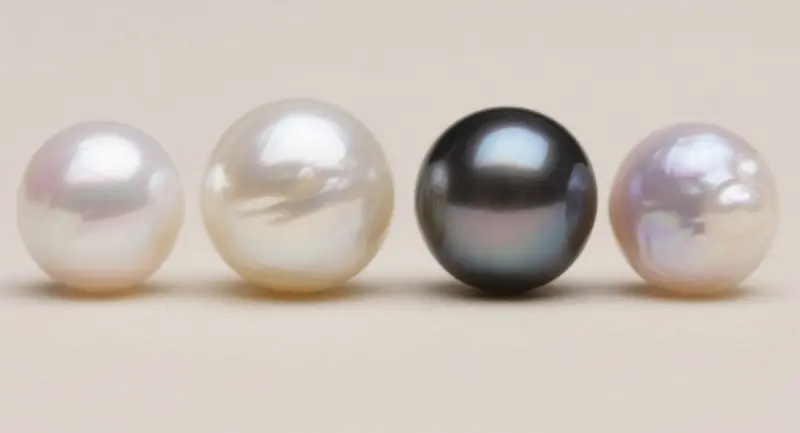
Saltwater Pearls :
- Akoya pearls: $20-200 per piece wholesale
- South Sea pearls: $50-500+ per piece wholesale
- Tahitian pearls: $30-300+ per piece wholesale
- Standard freshwater: $2-50 per piece wholesale
- High-grade freshwater: $20-100+ per piece wholesale
We’ve seen retailers mark up Akoya pearls 300-500%. Freshwater? Usually 200-400%.
2. Size – Bigger Isn’t Always Better (But Usually Is)
The Size-Price Rule:
- 6-7mm: Base price
- 8-9mm: 2-3x base price
- 10-11mm: 4-6x base price
- 12mm+: 8-15x base price
Pro tip: Don’t just measure one pearl. Measure them all. A 7mm pearl mixed in with 8mm pearls? That’s where your profit margin goes to die. Because they don’t weigh the same.
3. Shape – Round Rules, But Not Always
Price Hierarchy by Shape:
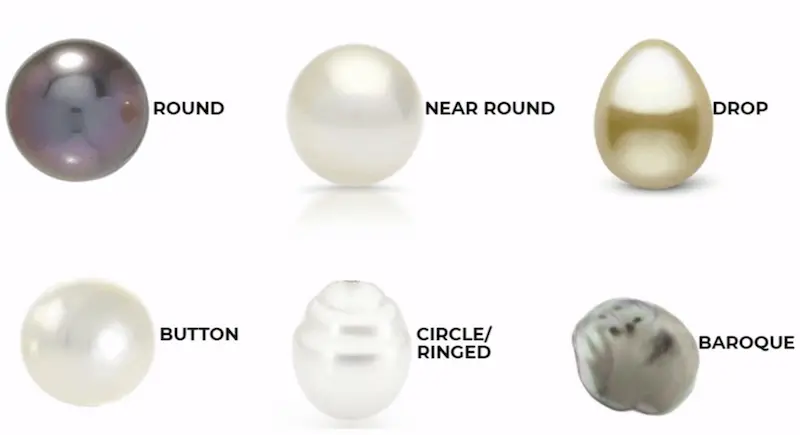
- Round: 100% of market value
- Near-round: 70-80% of round price
- Oval/Drop/Button: 50-70% of round price
- Baroque: 30-60% of round price
- Circled: 40-70% of round price
4. Surface Quality – What Your Customers Actually See
Grading Scale:
- AAAAA (Flawless): Premium pricing
- AAAA (Minor blemishes): 80-90% of AAA price
- AAA(Slight blemishes): 60-80% of AAA price
- AA (Moderate blemishes): 40-60% of AAA price
- A (Heavy blemishes): 20-40% of AAA price
Quick surface check:
- Hold pearl 12 inches away
- Look for pits, scratches, or dull spots
- Grade the worst pearl in the lot (that’s your actual grade)
5. Luster – The Make-or-Break Factor
The Mirror Test:
- Excellent: You can see your reflection clearly
- Very Good: Reflection is slightly blurry
- Good: You see light but no clear reflection
- Fair: Dull, chalky appearance
- Poor: No reflection at all
Pricing impact: Poor luster pearls are worth 10-20% of excellent luster pearls. No exceptions.
6. Color – Market Demand Drives Price

Natural Colour Premiums:
- White/Cream: Base price (highest demand)
- Silver/Grey: 80-120% of white price
- Golden: 150-300% of white price (depending on saturation)
- Black: 200-500% of white price (natural black only)
- Peacock/Green: 300-800% of white price
Heads up: Dyed pearls are worth 20-40% of natural color pearls. Always disclose treatment.
7. Matching – The Hidden Profit Killer
Matching Factors:
- Size variation (max 0.5 mm difference)
- Color consistency
- Shape uniformity
- Surface quality consistency
- Luster matching
The Matching Tax: Well-matched strands command 50-100% premiums over loose pearls.
How to Price Pearls: The Xinye Method – A Comprehensive Guide
With some basic knowledge of pearls, we can follow the steps below to answer the question “How to Price Pearls?
Step 1: Identify Pearl Type and Origin
Start with your base wholesale price for that pearl type.
Step 2: Apply the Size Multiplier
Use our size chart above to adjust your base price.
Step 3: Grade Quality Factors
- Surface quality: Multiply by 0.2-1.0
- Luster: Multiply by 0.1-1.0
- Shape: Multiply by 0.3-1.0
- Color: Multiply by 0.8-8.0
Step 4: Add Matching Premium
Well-matched sets: Add 50-100%
Step 5: Calculate Your Retail Price
Wholesale to retail markup:
- Akoya pearls: 300-500%
- South Sea pearls: 400-600%
- Tahitian pearls: 350-500%
- Freshwater pearls: 200-400%
Many retailers overlook how to price pearls accurately, leading to lost sales and customer trust.
Pearl Pricing Mistakes That Kill Profits
In response to the question “how to price pearls”, here are some common mistakes. Many retailers overlook how to price pearls accurately, leading to lost sales and customer trust.
Pearls aren’t gold. A heavy, low-quality pearl is worth less than a light, high-quality one.
Treated pearls require different pricing:
- Bleached: 90% of natural price
- Dyed: 20-40% of natural price
- Irradiated: 60-80% of natural price
Drill hole red flags:
- Off-center holes: 20-30% price reduction
- Chipped holes: 30-50% price reduction
- Uneven holes: 20-40% price reduction
- Wedding season (April-September): Increase prices 10-15%
- Holiday season (November-December): Premium pricing justified
- January-March: Discount season for inventory movement
Advanced Pricing Strategies, the Bundle Pricing Method
Instead of pricing pearls one at a time, how about these packages?
- Starter Sets: Pearl Earrings and a Pearl Pendant (Charge 40% more than if you sold them separately)
- Bridal Packages: Pearl Necklace + Pearl Earrings + Pearl Bracelet (Price it at 35% more than the individual prices)
- Collector Sets: A set of different kinds of pearls (Charge 50% more than if you sold them separately)
Before you put a price on anything, make sure you’ve done these checks central to the process of How to Price Pearls:
- [ ] Double-check the type of pearl and write it down
- [ ] Measure the size and make sure it’s accurate
- [ ] Check the surface for imperfections under good lighting
- [ ] Test the luster using the mirror method
- [ ] Assess the color in natural light
- [ ] Categorize the shape correctly
- [ ] Check the drill holes are clean
- [ ] Make sure the pearls match well in a set
- [ ] Tell customers about any treatments done to the pearls
- [ ] See what similar pearls are selling for on the market
FAQs
How do you determine pearl quality for pricing?
There are seven things that affect the quality of a pearl: its type, size, shape, surface quality, luster, color, and how well it matches other pearls. Each factor has a different effect on the final price. The quality and shine of the surface are the most important factors. A pearl with bad shine is only worth 10–20% of one with good shine.
What’s the difference between wholesale and retail pearl prices?
Wholesale prices are what retailers pay suppliers like us. Retail markup typically ranges from 200-600% depending on pearl type. Akoya and South Sea pearls command higher markups (300-600%) while freshwater pearls usually see 200-400% markups.
How should cultured pearls be priced compared to natural pearls?
Natural pearls are very rare and cost a lot more than cultured pearls of the same quality—often 10 to 50 times more. But 99% of the pearls for sale today are cultured. Make cultured pearl categories the main focus of your pricing strategy.
Do pearl prices fluctuate seasonally?
Yes, pearl prices follow seasonal demand patterns. Holidays (November-December) justify 10-20% price premiums.
How do I price irregular-shaped pearls?
Baroque and off-round pearls are priced at 30-80% of equivalent round pearls, depending on how attractive the irregular shape is. Symmetrical drops and ovals command higher prices than randomly shaped baroque pearls.
What factors make some pearls more expensive than others?
The size has the biggest effect on the price; each millimeter increase can double or triple the price. The type of pearl also matters. South Sea and Tahitian pearls cost more than Akoya pearls, which cost more than freshwater pearls. The highest prices come from a perfect round shape, a smooth surface, and a great shine.
How do I ensure fair wholesale pearl prices?
Compare prices across multiple suppliers for identical pearl specifications. Check that size, quality grade, and pearl type match exactly. At Xinye Pearls, we will know exactly what we are buying.
Should I price pearl jewelry differently than loose pearls?
Finished jewelry usually costs more because of the work that goes into it, the materials (like gold, silver, and clasps), and the labor. For simple settings, add 30% to 50% to the cost of your pearls; for more complicated designs, add more. When setting prices for finished pieces, always think about the quality of the setting.
The bottom line on how to price pearls: With this set of pricing principles in hand, there is no need to guess the price of a pearl. Every pearl can be priced by type, size, quality, and market demand. With these factors in hand, you will never be confused about pearl pricing again.
In that case, the question of “How to Price Pearls” is solved.
At Xinye Pearl, we’ve been helping retailers price pearls profitably for over a decade. When you know what you’re looking at, pricing becomes simple.



